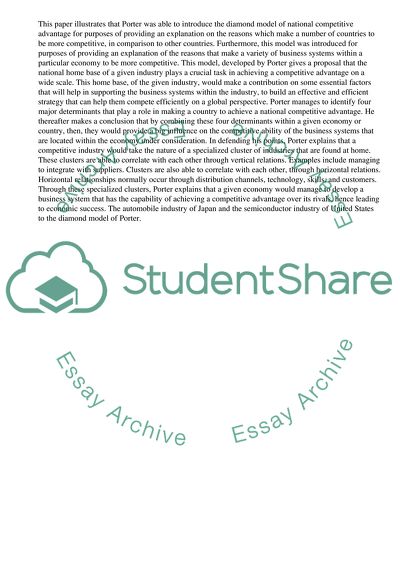Cite this document
(“Diamond Model of Porter Essay Example | Topics and Well Written Essays - 2250 words - 11”, n.d.)
Retrieved from https://studentshare.org/management/1683093-how-convincing-is-porters-model-of-national-competitive-advantage-in-explaining-the-characteristics-and-performance-of-the-business-systems-of-major-economies
Retrieved from https://studentshare.org/management/1683093-how-convincing-is-porters-model-of-national-competitive-advantage-in-explaining-the-characteristics-and-performance-of-the-business-systems-of-major-economies
(Diamond Model of Porter Essay Example | Topics and Well Written Essays - 2250 Words - 11)
https://studentshare.org/management/1683093-how-convincing-is-porters-model-of-national-competitive-advantage-in-explaining-the-characteristics-and-performance-of-the-business-systems-of-major-economies.
https://studentshare.org/management/1683093-how-convincing-is-porters-model-of-national-competitive-advantage-in-explaining-the-characteristics-and-performance-of-the-business-systems-of-major-economies.
“Diamond Model of Porter Essay Example | Topics and Well Written Essays - 2250 Words - 11”, n.d. https://studentshare.org/management/1683093-how-convincing-is-porters-model-of-national-competitive-advantage-in-explaining-the-characteristics-and-performance-of-the-business-systems-of-major-economies.


